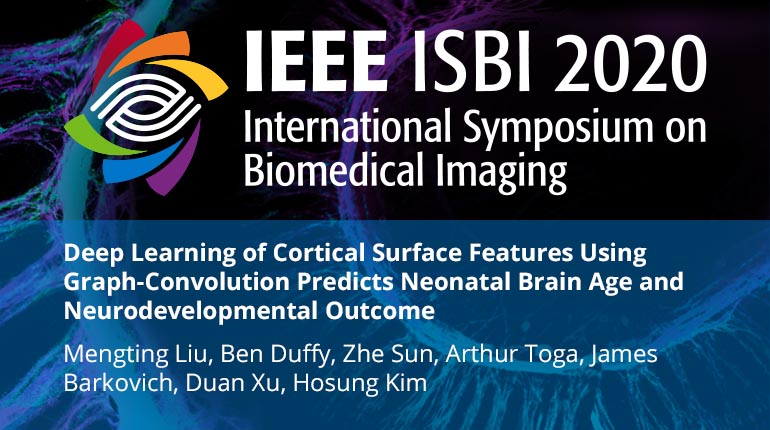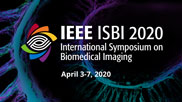Collection:

We investigated the ability of graph convolutional network (GCN) that takes into account the mesh topology as a sparse graph to predict brain age for preterm neonates using cortical surface morphometrics, i.e. cortical thickness and sulcal depth. Compared to machine learning and deep learning methods that did not use the surface topological information, the GCN better predicted the ages for preterm neonates with none/mild perinatal brain injuries (NMI). We then tested the GCN trained using NMI brains to predict the age of neonates with severe brain injuries (SI). Results also displayed good accuracy (MAE=1.43 weeks), while the analysis of the interaction term (true age ? group) showed that the slope of the predicted brain age relative to the true age for the SI group was significantly less steep than the NMI group (p
- IEEE MemberUS $11.00
- Society MemberUS $0.00
- IEEE Student MemberUS $11.00
- Non-IEEE MemberUS $15.00
Videos in this product
Deep Learning of Cortical Surface Features Using Graph-Convolution Predicts Neonatal Brain Age and Neurodevelopmental Outcome
We investigated the ability of graph convolutional network (GCN) that takes into account the mesh topology as a sparse graph to predict brain age for preterm neonates using cortical surface morphometrics, i.e. cortical thickness and sulcal depth. Compared to machine learning and deep learning methods that did not use the surface topological information, the GCN better predicted the ages for preterm neonates with none/mild perinatal brain injuries (NMI). We then tested the GCN trained using NMI brains to predict the age of neonates with severe brain injuries (SI). Results also displayed good accuracy (MAE=1.43 weeks), while the analysis of the interaction term (true age ? group) showed that the slope of the predicted brain age relative to the true age for the SI group was significantly less steep than the NMI group (p
 Cart
Cart Create Account
Create Account Sign In
Sign In
